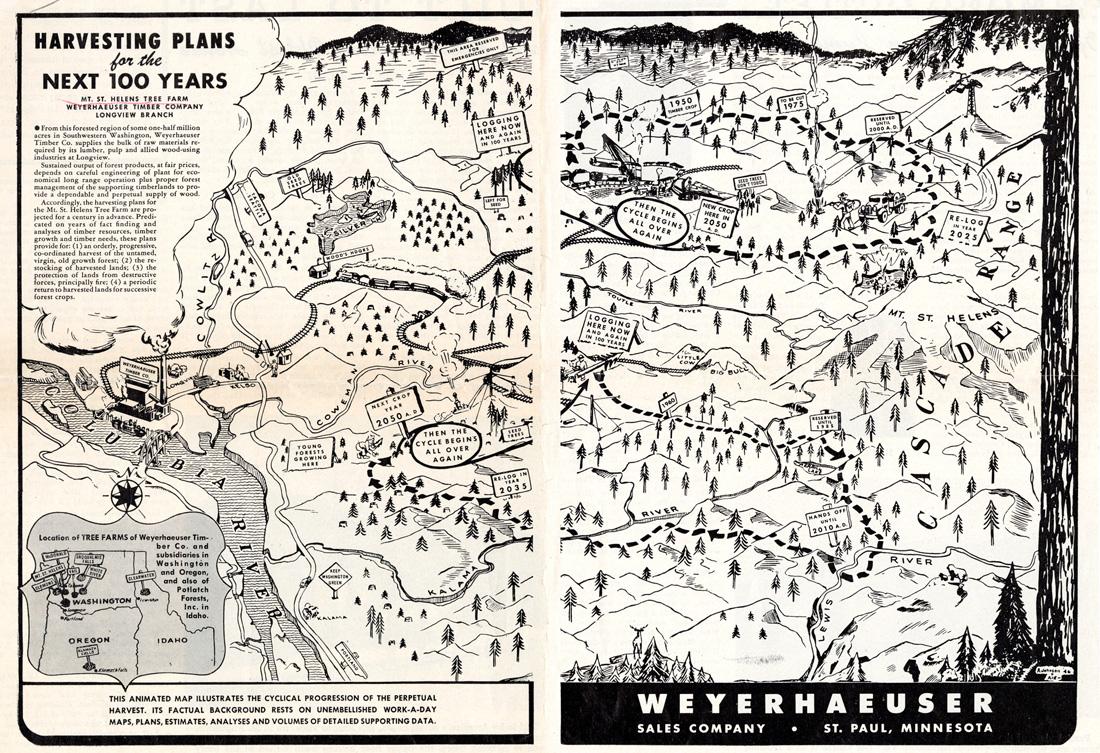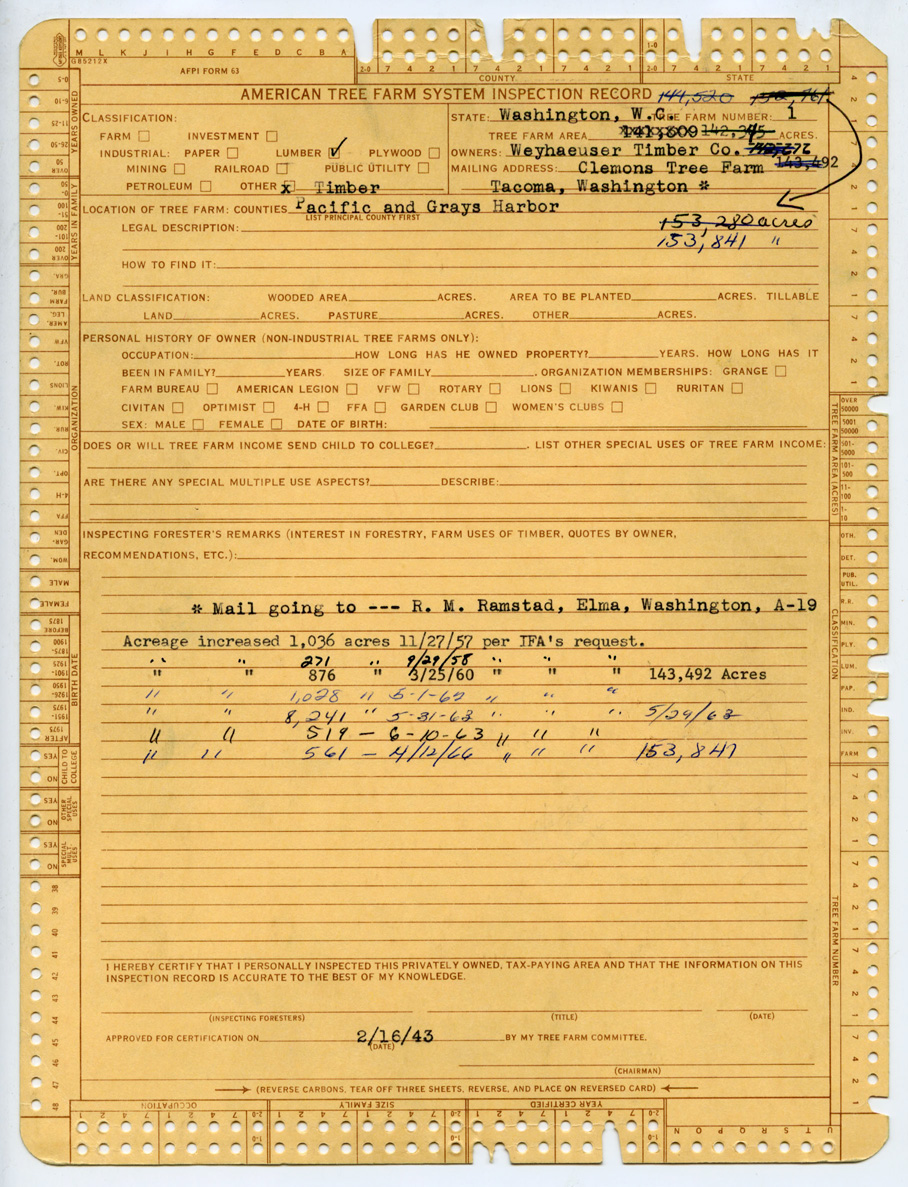New Collection: American Tree Farm System Records
Gifford Pinchot famously wrote in Breaking New Ground, “Forestry is Tree Farming. Forestry is handling trees so that one crop follows another. To grow trees as a crop is Forestry.”
While next June marks the official 70th anniversary of the first certified tree farm, the concept of renewable forestry can be traced back to the turn of the last century. The rise of the tree farm movement in America marked a shift in perspective towards privately owned forest land as a sustainable resource worthy of long-term conservation and management. Private landowners became important figures, working on behalf of the public’s interest as the stewards of this valuable resource.

Promotional button commemorating 40 years of the Tree Farm System.
The Forest History Society Library and Archives recently received 24 cartons of archival documents from the American Tree Farm System (ATFS). Currently being processed, the collection includes historical material such as essays from the 1940s and 1950s attempting to define the burgeoning movement, inspection and certification records of some of the first tree farms, and early press clippings. The majority of the collection’s documents cover the organization’s activities from 1980 to 2005, and include publications such as Tree Farmer Magazine and Green America, records of various awards for outstanding forestry such as the Tree Farmer of the Year and Inspector of the Year, minutes and related materials from annual conventions and committees, records from educational initiatives such as Project Learning Tree, and materials from dedications such as the certification of President Jimmy Carter’s tree farm. The collection also includes numerous photos and slides of ATFS events and activities, as well as films of educational programming, and public service announcements by famous tree farmers such as actress Andie MacDowell, musician Chuck Leavell, President Carter, and the incomparable Andy Griffith.
The Clemons Tree Farm, a 120,000-acre plot in Washington State publicly dedicated by the Weyerhaeuser Timber Company on June 12, 1941, is recognized as the first official tree farm. The tree farm movement originated as an initiative of industrial firms such as Weyerhaeuser managing large tracts of forestland to demonstrate self-regulation and sustainability. Over the years the ATFS has grown to include smaller private landowners, with the system currently estimated at 24 million acres of certified forestland managed by over 90,000 tree farmers.
One of the videos included in the collection is a 4-minute public service announcement, produced by the Weyerhaeuser Company in celebration of the 40th anniversary of the Clemons Tree Farm, that gives a general overview of the history and mission of the American Tree Farm System:
Pictured below are a few other items of interest from the collection:

An official certificate of membership to the American Tree Farm System.

A Weyerhaeuser advertisement depicting a map of the 100-year plan for the Mount St. Helens Tree Farm, 1946.

A Louisville Slugger baseball bat custom made with the Tree Farm logo to commemorate the Domino’s Lodge Tree Farm dedication on March 19, 1988. (click to enlarge)

An official inspection document of the original Clemons Tree Farm in Montesano, Washington, 1943.
For more information about the history of the American Tree Farm System you can view an article by Richard Lewis entitled “Tree Farming: A Voluntary Conservation Program,” from the July 1981 issue of the Journal of Forest History.
For a visual history, also see the following online galleries from the FHS Photo Collection:
- Tree Farms — General
- Tree Farms — Promotional Materials
- Tree Farms — States — Alabama
- Tree Farms — States — Arkansas
- Tree Farms — States — California
- Tree Farms — States — Idaho
- Tree Farms — States — Maine
- Tree Farms — States — Minnesota
- Tree Farms — States — Ohio
- Tree Farms — States — Oregon
- Tree Farms — States — Washington

